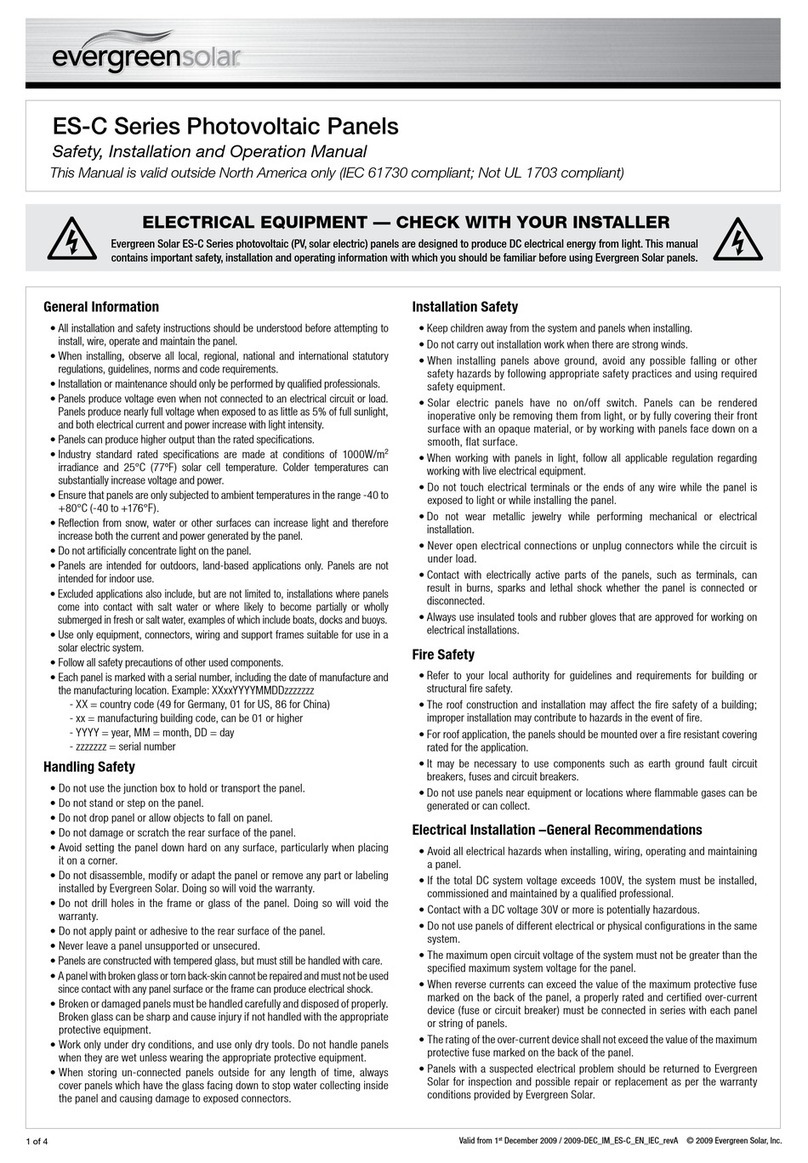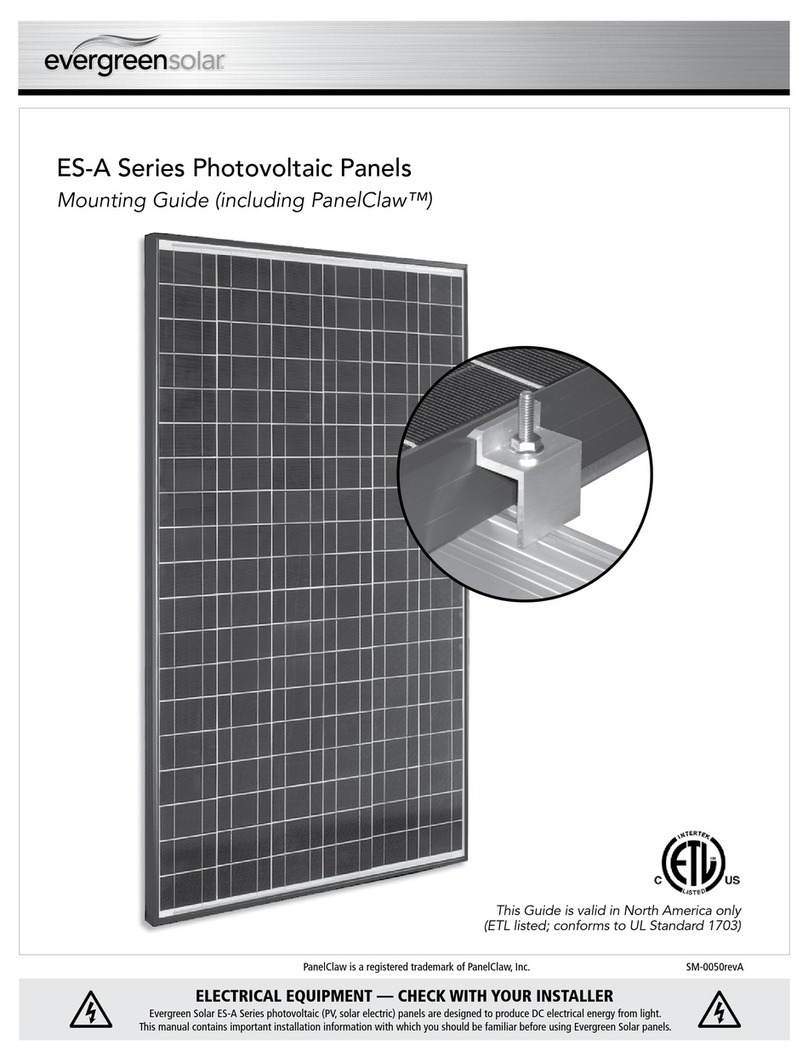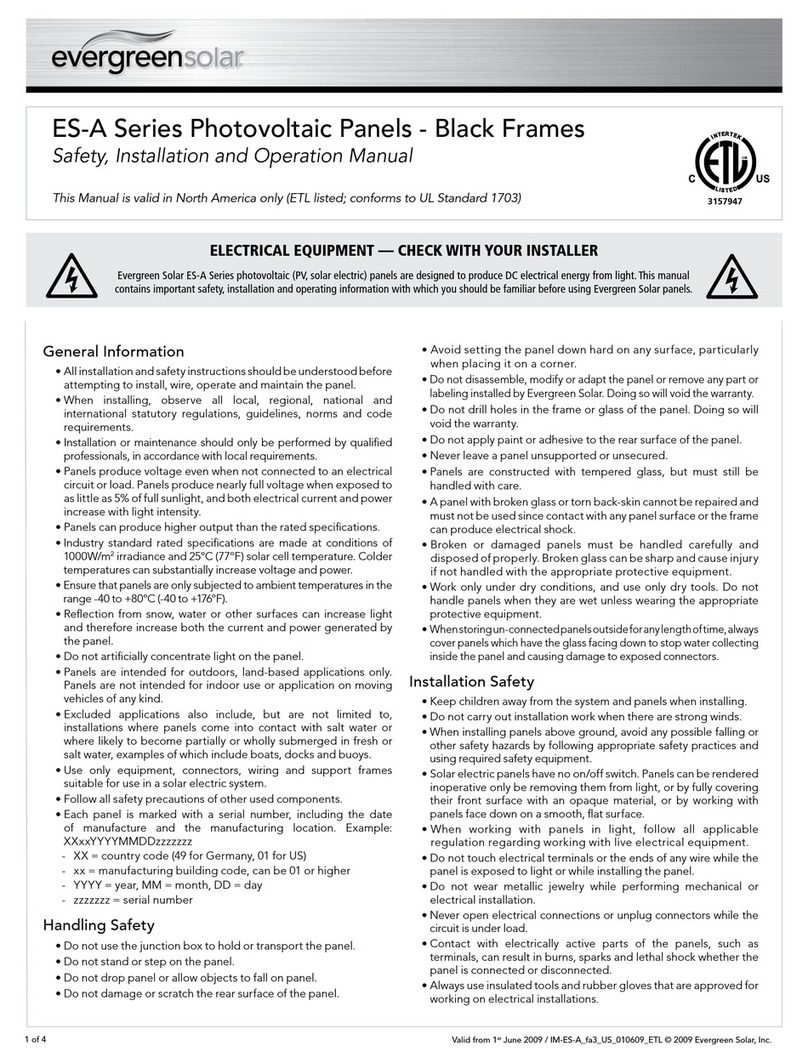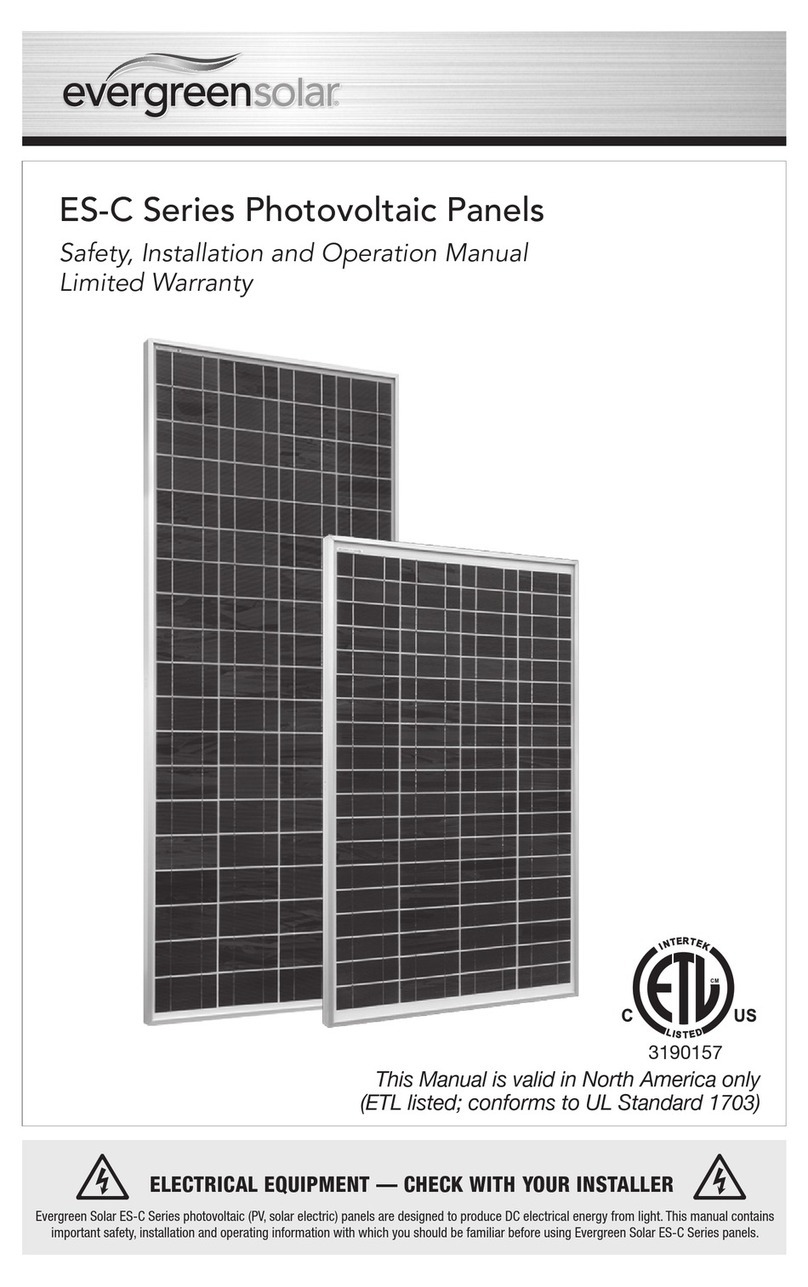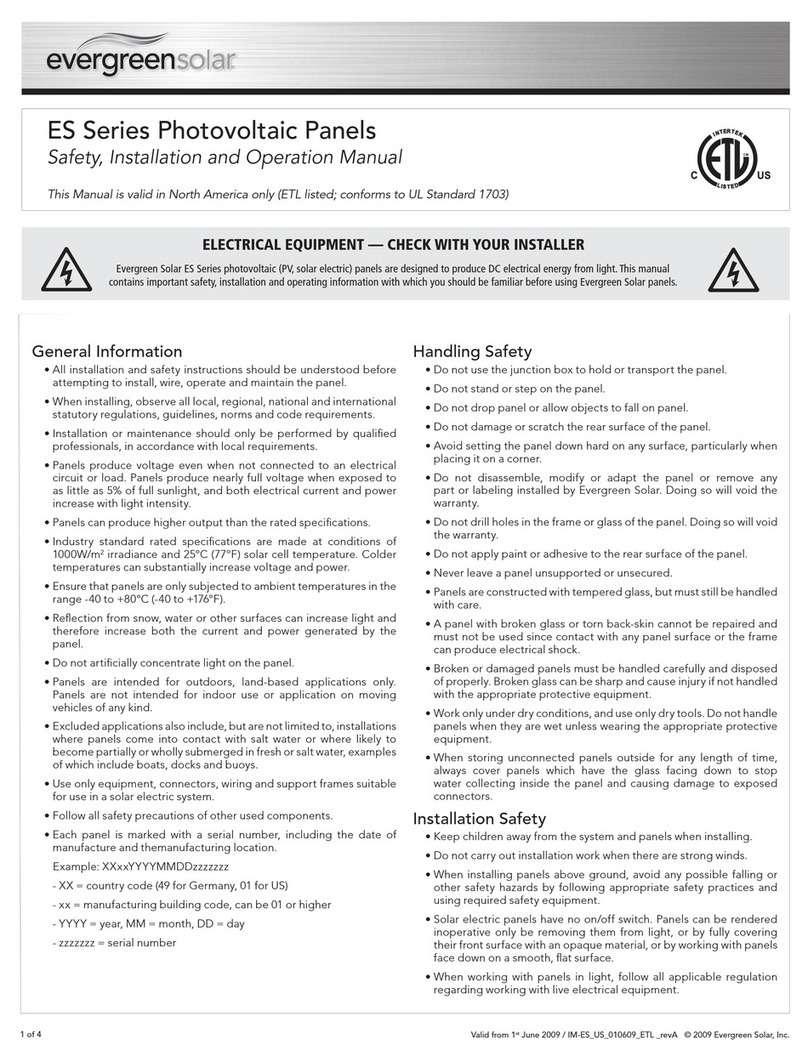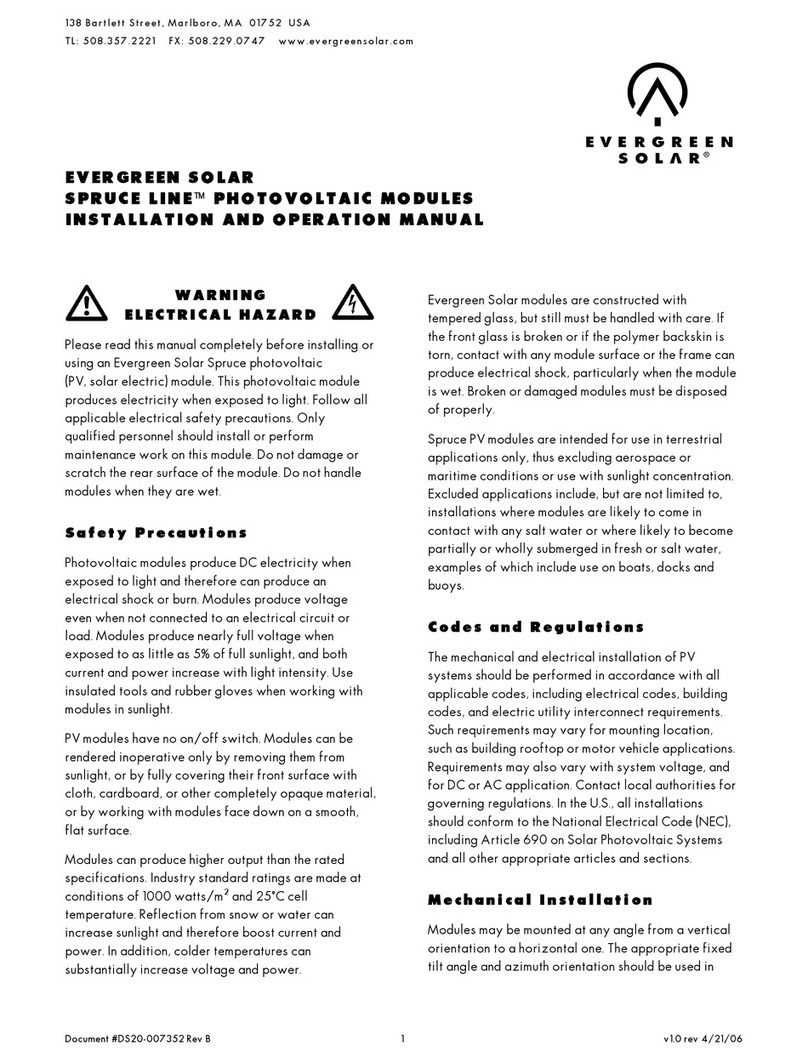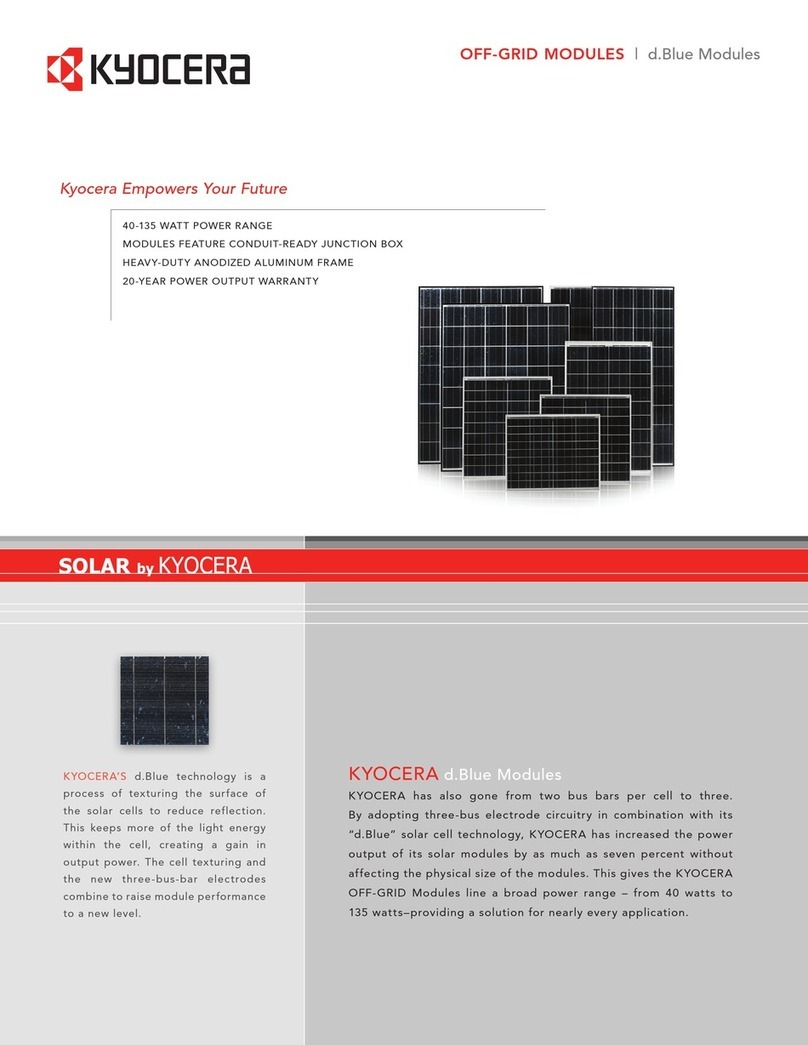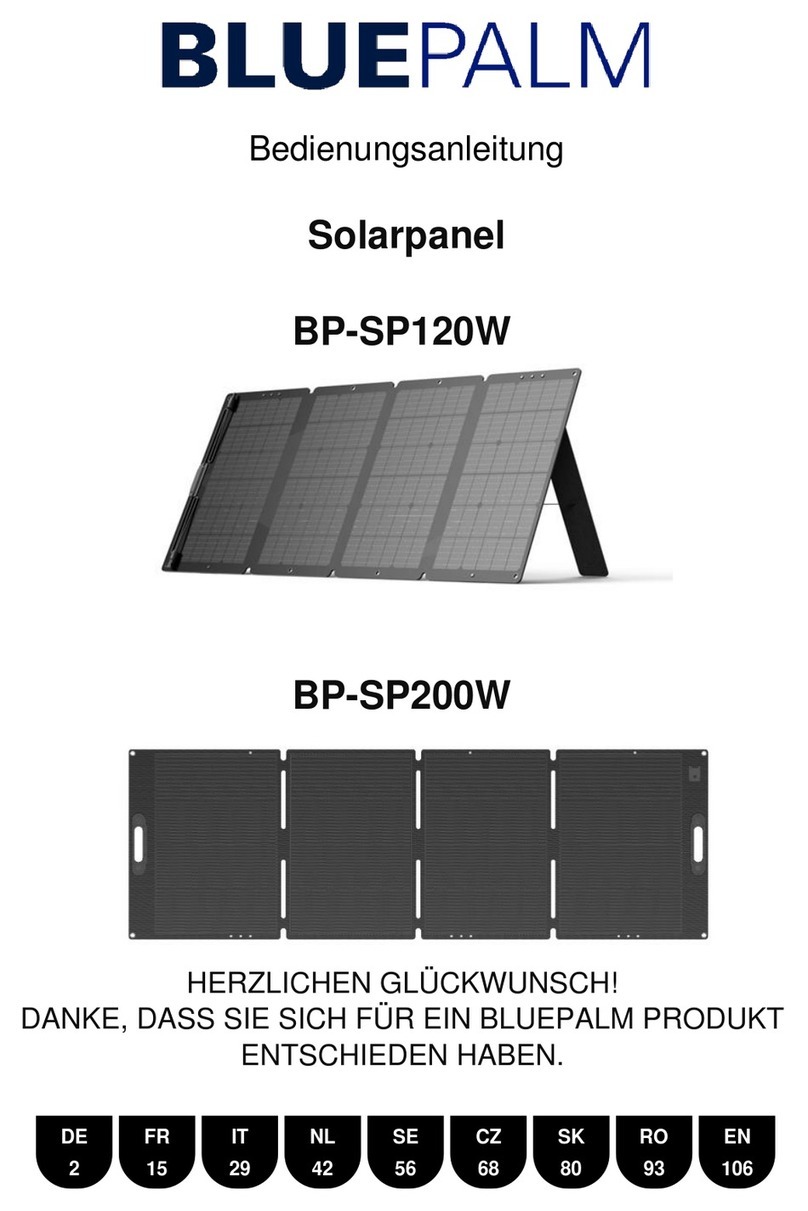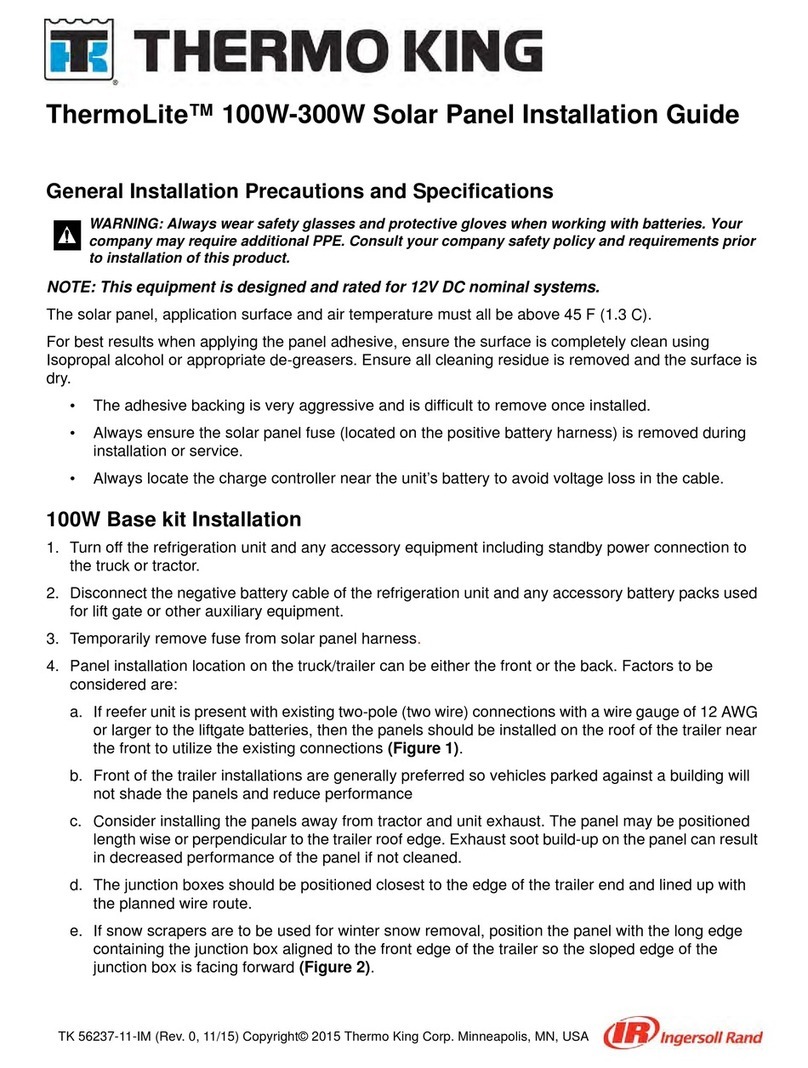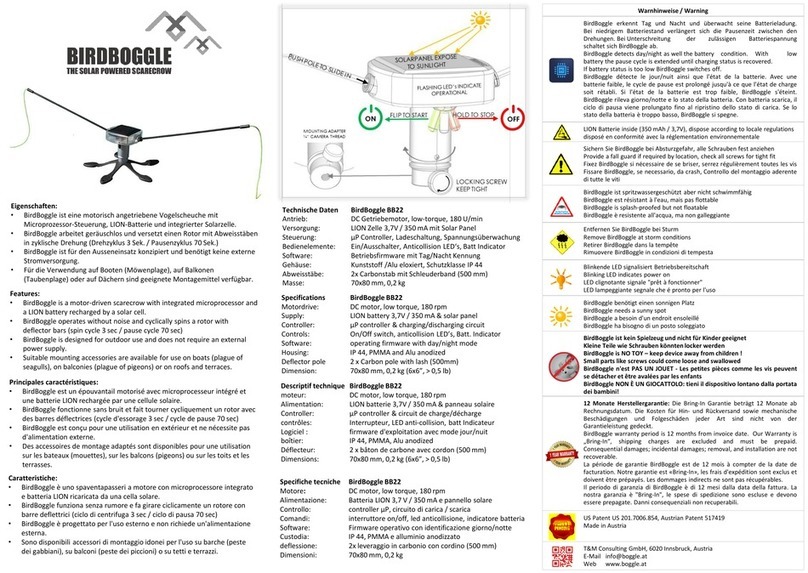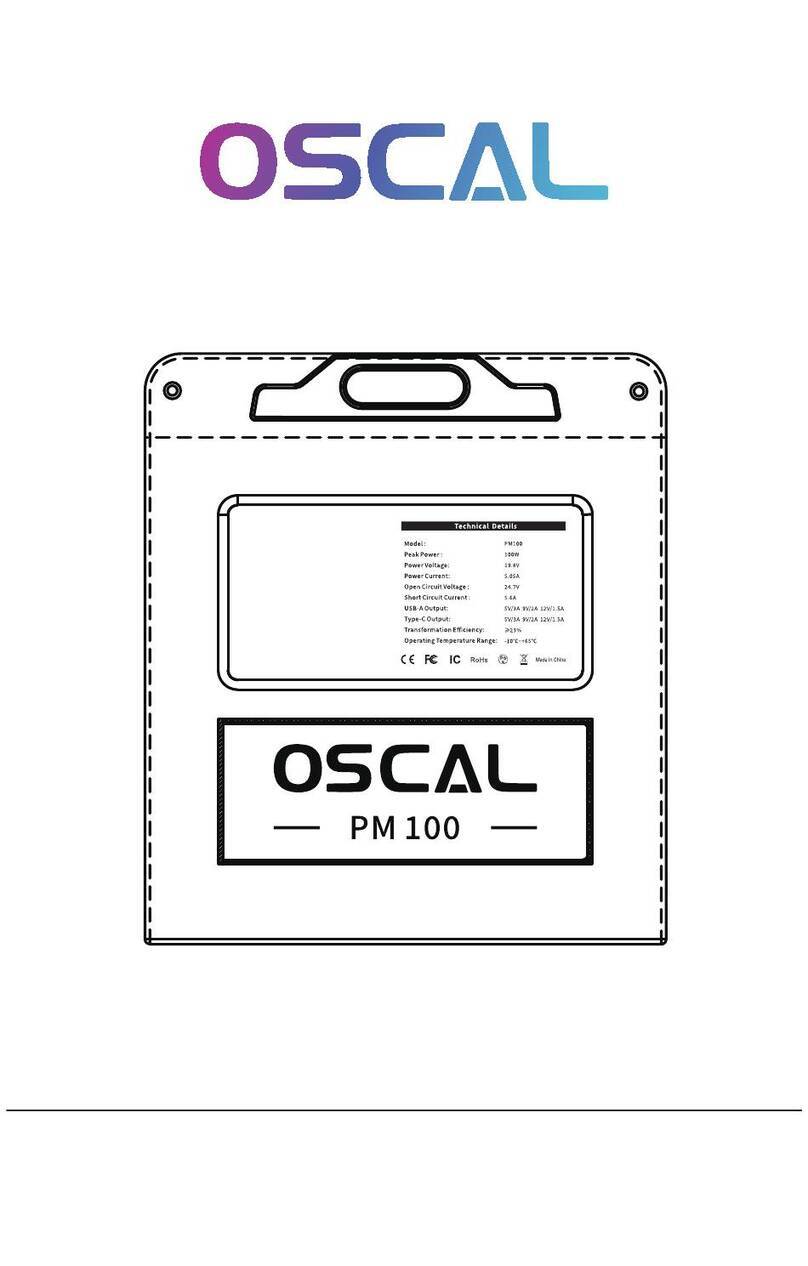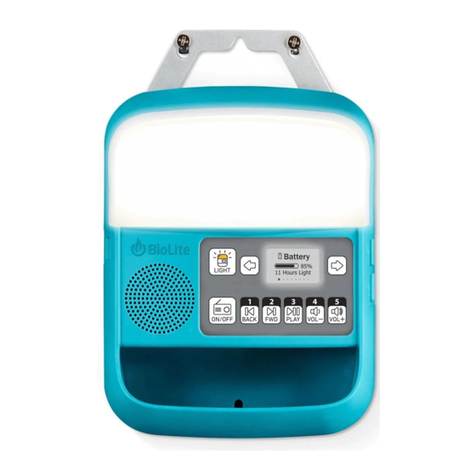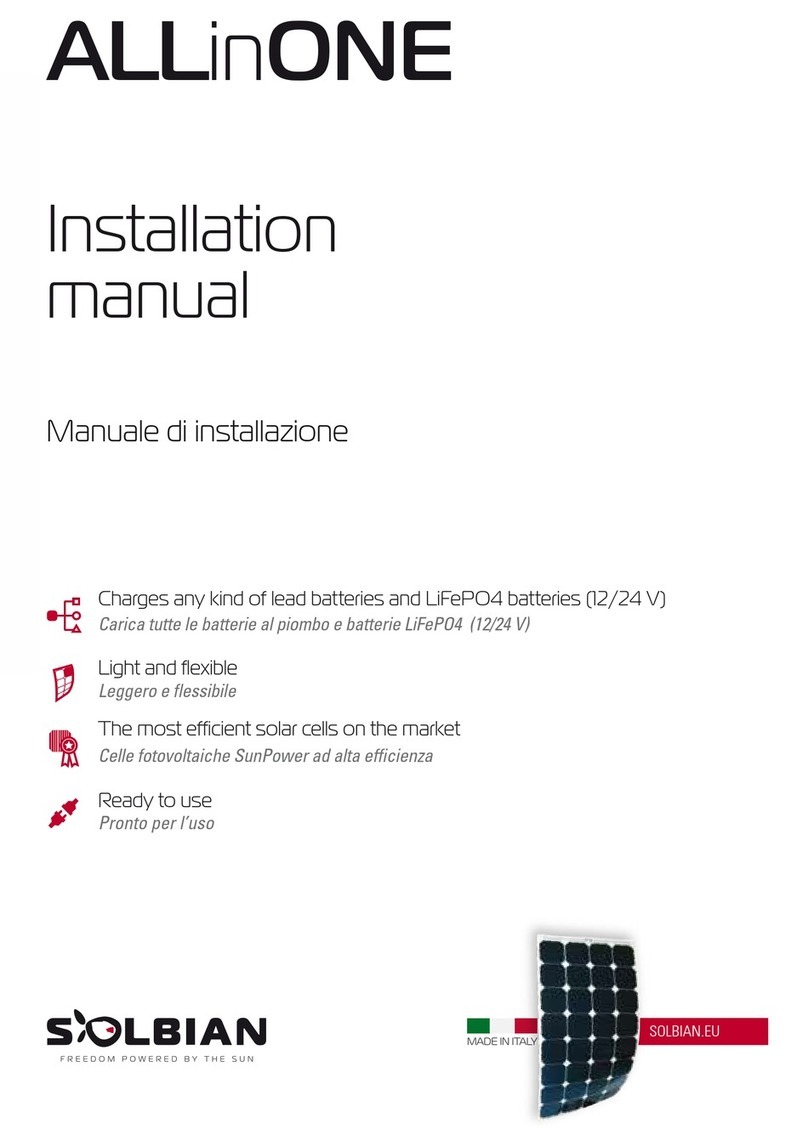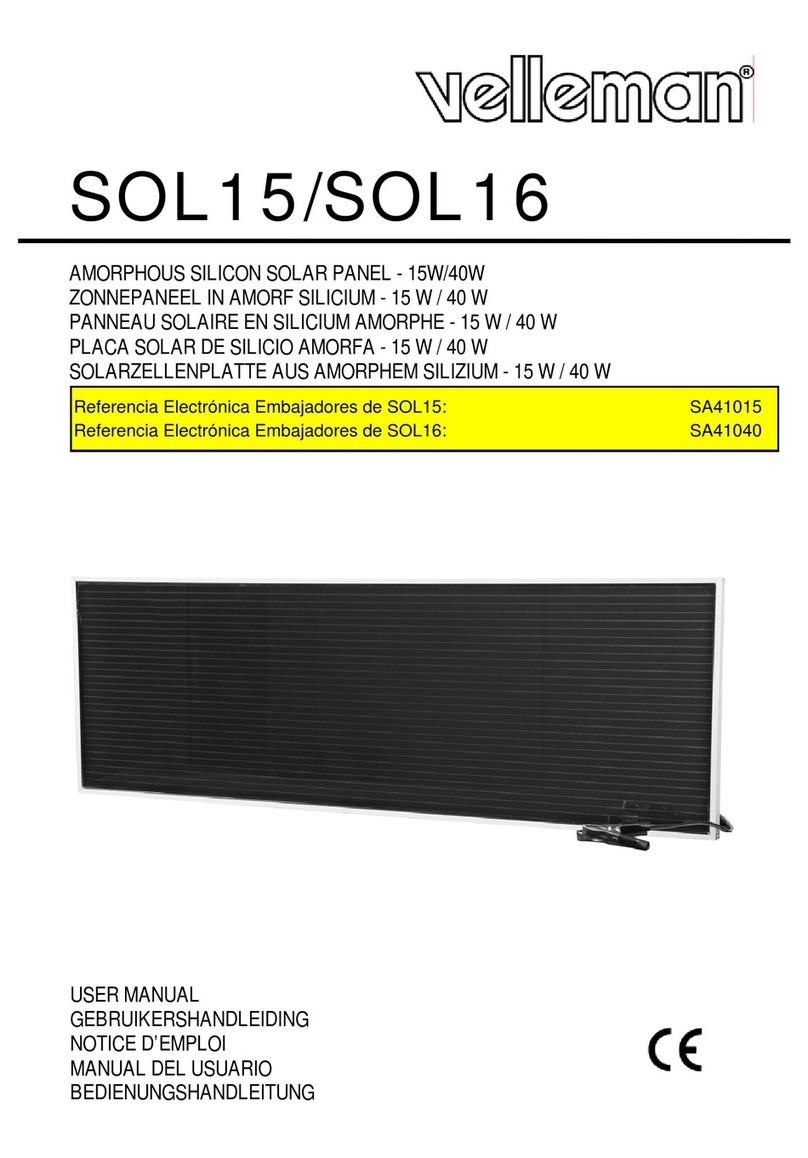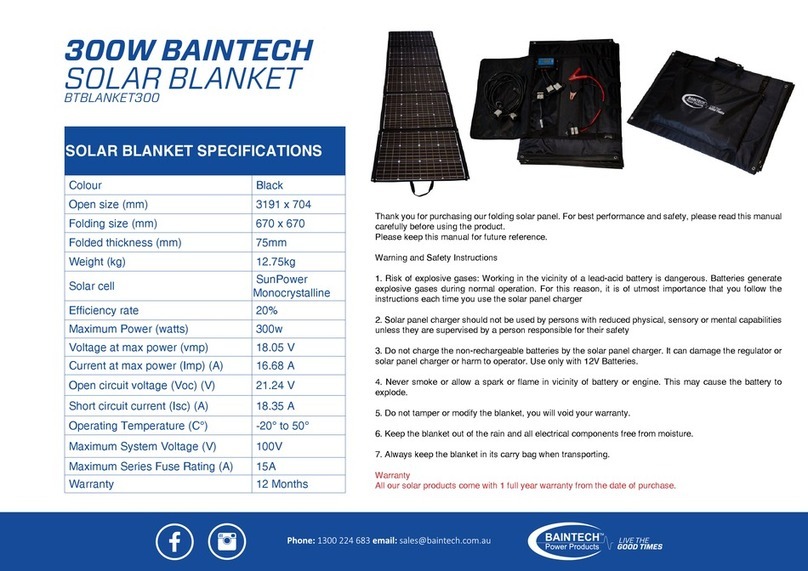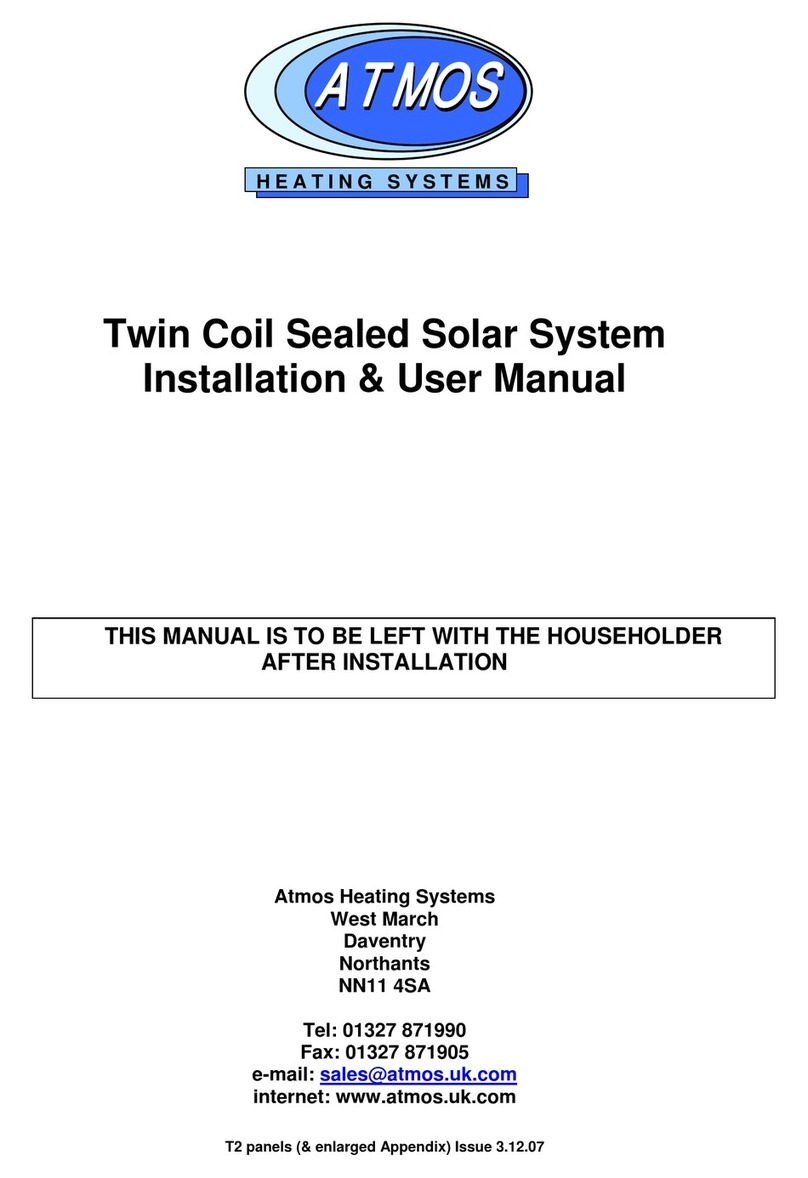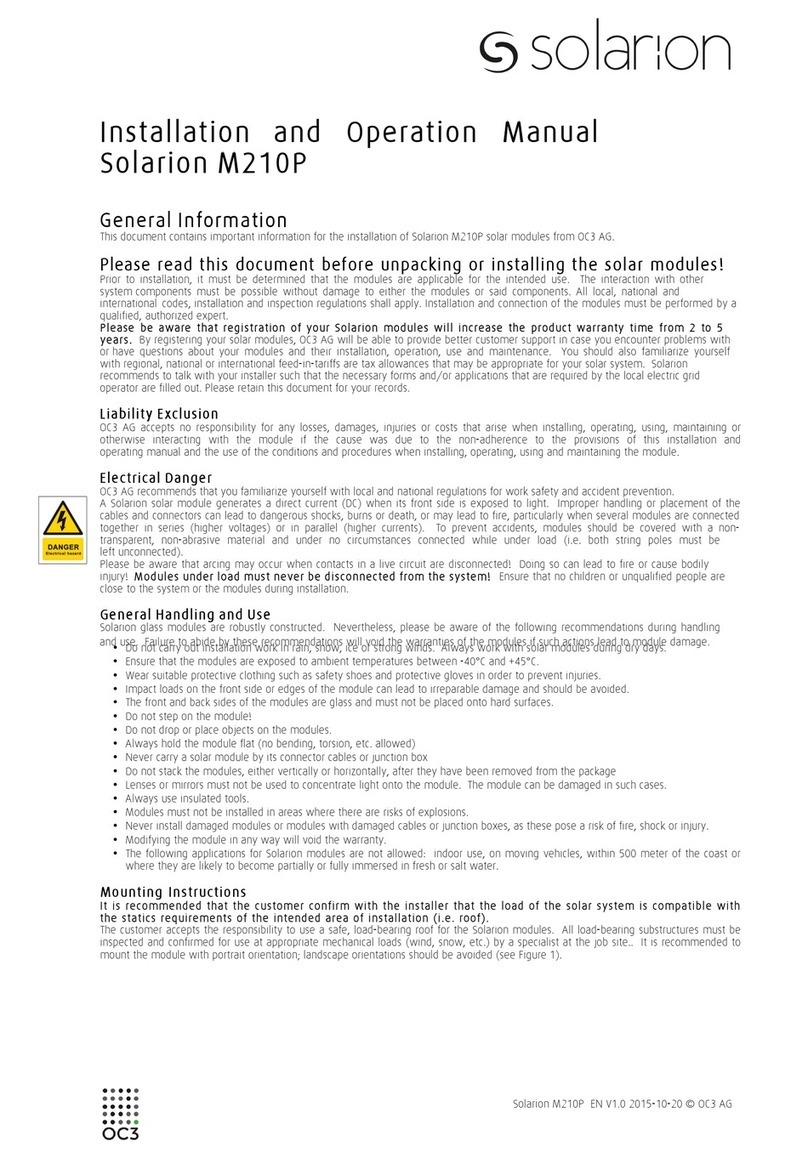
Document #DS20-007024 2 v3.8 rev 2/15/06
order to maximize the exposure to sunlight. They may
be mounted in either orientation, in “landscape” or
“portrait.” Modules should be bolted to support
structures through mounting holes located in the
frame’s back flanges only. Four 1/4-inch stainless steel
bolts, with nuts, washers, and lock washers, are
recommended for module mounting. Creation of
additional holes for mounting is not recommended and
will invalidate the warranty. Modules should not be
mounted by supports at the ends.
The modules are designed for a maximum allowable
design pressure of 50 pounds per square foot, which
may correspond to a nominal wind speed of
approximately 125 mph in certain circumstances.
Actual maximum allowable wind speed may be
influenced by module type, mounting configuration,
location, and other factors. In no case should modules
be exposed to pressures greater than 50 pounds per
square foot of uniformly distributed wind, snow, or
other loading. Care should be taken to avoid mounting
modules in areas that are prone to drifting snow, icicle
and/or ice dam formation. For example, a module
mounted with its edge located directly above an
overhanging roof eve is likely to be subjected to ice
dam formation. The weight of an ice dam or icicle can
easily exceed the allowable 50 pounds per square
foot of uniformly distributed load.
A clearance of four inches or more behind the modules
is recommended to permit air circulation and cooler
module operation. Elevated temperatures lower
operating voltage and power and shorten module
lifetime. Clearance of 1/4 inch or more between
modules is required to allow for thermal expansion of
the frames.
Electrical Installation
Modules should be mounted to maximize direct
exposure to sunlight and to eliminate or minimize
shadowing. Even partial shadowing can substantially
reduce module and system output. Furthermore, partial
shadowing can elevate the shaded portion’s internal
temperature, which may lower output and shorten
module life. Bypass diodes are factory installed.
Blocking diodes should be installed in series with each
module or series string to prevent possible back flow
of energy through the module(s) when modules or
strings are connected in parallel or used in conjunction
with a battery.
Whenever necessary to comply with local codes, use a
listed fuse or circuit breaker, rated for the maximum
series fuse rating of the module and the system
voltage.
All electrical components should have ratings equal or
greater to the system rating. Do not exceed the
maximum allowable system voltage as listed on the
module label.
All module frames should be grounded for safety. The
module frame is provided with grounding holes that
accommodate self-tapping screws. A #10 stainless
steel tapping screw is recommended.
Under normal conditions, a photovoltaic module may
experience conditions that produce more current
and/or voltage than reported at Standard Test
Conditions. Accordingly, the values of short circuit
current, Isc, and open circuit voltage, Voc, marked on
UL-listed modules should be multiplied by a factor of
1.25 when determining component voltage ratings,
conductor capacities, fuse sizes, and size of controls
connected to the module output. In the U.S., refer to
Section 690-8 of the National Electric Code for an
additional multiplying factor of 1.25, which may be
applicable.
Rated electrical characteristics are within 10 percent
of measured values at Standard Test Conditions of:
1000 W/m2, 25°C cell temperature and solar spectral
irradiance per ASTM E 892.
Cedar Line modules are equipped with factory-
installed wires and quick connectors. These modules
have been designed to be easily interconnected in
series. Each module has two single-conductor wires,
one positive and one negative, that are pre-wired
inside the junction box. The connectors at the opposite
end of these wires allow easy series connection of
adjacent modules by firmly inserting the male
connector of a module into the female connector of an
adjacent module until the connector is fully seated.
A separate return wire or wires may be required to run
the positive and negative terminations of the series
string of modules to the load. Male and/or female
connectors pre-attached to wires may be used at the
string terminations for return wire connections and/or
for source circuit box terminations.
Cedar Line modules also have a bypass diode installed
(see next table for details).




